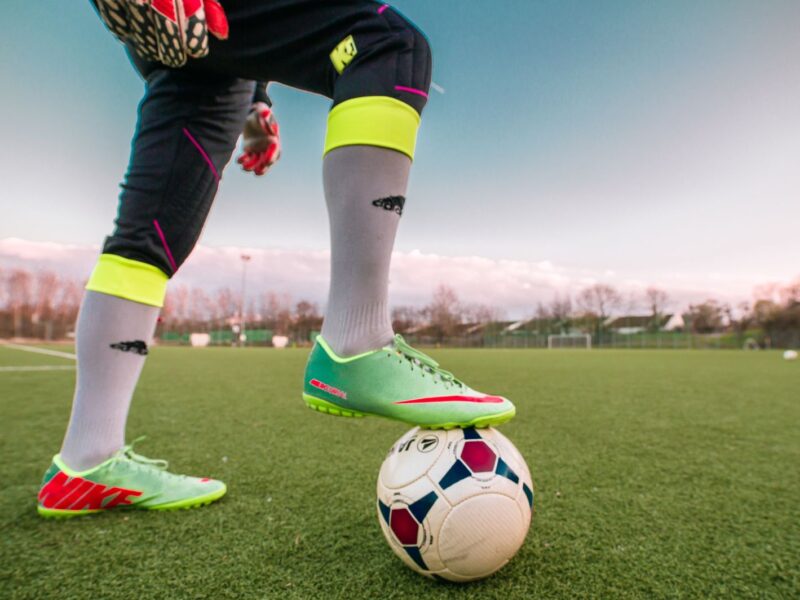Are you wondering how to master putting?
Putting is essential in golf, and yet it’s often an aspect of the sport that players find challenging. It progressively gets harder as your score increases and your approach to the green becomes more risky. Alternatively, you may get everything right in your approach to the green, but your putting lets you down.
It’s easy to blame the putter or the golf course, but in reality, there are many things that go into a perfect putting stroke. Here are some tips on how to improve putting in golf so you can win more games or shave some strokes off your score.
Table of Contents
How to Align Yourself for a Proper Putt
For a proper putt, proper alignment of the putter head is essential. Start by standing behind the ball and look at the hole and the line to the hole.
Next, take a few practice swings with your putter while maintaining the alignment of your putter head in line with the hole and the desired line of travel.
Understanding the Line & Speed of the Putt
Understanding the line and speed of the putt is paramount to success in putting. To understand the line of the putt, any potential distractions such as hills, contours, and water hazards should be identified and eliminated.
The golfer then needs to visualize a line between the ball and the intended target and establish their preferred aiming point. This aiming point should then be adjusted based on the speed of the putt – faster putts require a firmer line, and slower putts require a more relaxed line.
Grip Techniques for Better Accuracy
Hold the putter firmly and ensure your lower forearms are parallel, which will allow the wrists to hinge freely through the stroke. Make sure the grip is neither too tight nor too loose, as this will promote added accuracy.
To keep the hands quiet and controlled, maintain a light grip pressure throughout the stroke and keep your upper body as still as possible. Be mindful of the relationship of your hands to the grip, and keep the thumbs aligned with the clubface.
Mindset Preparation for Maximizing Putts
Mental preparation is key to successful putting for beginners. Before attempting a putt, one should focus on a keyword, phrase, or visualization to keep their mind sharp and alert. Visualization has been proven to be a powerful tool that can lead to improved performance on the course; this includes observing the entire putt starting from the stance, to the angle of the putter, to the desired contact and finish.
Being intentional with your pre-shot routine is conducive to developing confidence and consistency. Staying focused and having a few affirmations to keep the focus on the present moment also contributes to a successful put. Practicing mindfulness while on the course can lead to improved better putting as it defines the attitude and dedication needed to improve.
Putting Posture and Set-up
Mastering a sound putting posture and setup is crucial for good putting. It is important to establish a good posture that is comfortable and repeatable. Your stance should be slightly wider than your shoulders, and your knees should be flexed to keep your stability.
Make sure you balance your weight between both feet and maintain your spine angle. You should grip the club a little firmer than a full-swing club. Ensure your hands are directly in line with your shoulders and your arms hang straight down from there.
Keeping your neck, wrists, and upper arms relaxed throughout the putting stroke will improve the accuracy of your stroke. Align your feet and the putter face square to the intended line of your putt and ensure your eyes are directly over the ball.
Visualize the line you are aiming to take and create a “gateway” with your arms and shoulders to help align the club face along your intended target line. Taking these steps will help promote a consistent putting posture and setup every time.
Mastering Your Swing
Good putting is all about mastering your swing, a vital element of success on the golf course. To master your swing, you must practice a technique that works for you. Start by taking some time to assess your posture and body mechanics.
Make sure you are standing in the right position with your feet, knees, hips, and shoulders at the correct angle, then sway slightly and rock back and forth to create a swinging sensation in your legs and lower body. Focus on having a smooth, balanced, and controlled swing that ebbs and flows with the movement of your body and arms.
Developing Consistency by Aiming
Firstly, a player should choose a point towards which to aim during the golf swing. This point can be a spot on the ground, a grass blade, the logo of the ball, or the flag on a green. Once the target point has been selected, the player should start using the same point for each shot.
The player should use their feet to line up the ball, aiming it at the chosen point. To get a feel for the distance and direction of each shot, the player should practice and observe each shot to get a sense of the direction and trajectory of the resulting shot.
Practicing Real Conditions
This means finding a practice green that is as close to the actual course as possible. Make sure the break of the practice green is similar to the one on the golf course you normally play on. This will help acclimatize you to the speed.
Work on distance control and alignment in order to improve your aim. Practicing the same, putting green several times a week will help you to familiarize yourself with the grain and measurements of slopes. Aim to practice all types of up and downhill puts.
Read this article to know more about putting mats.
Master Putting in Golf The Right Way
Putting in golf is an integral part of golf, and mastering it can be the difference between a great and a lousy game. With focus and discipline, anyone can learn and master the process.
Use the helpful tips included in the article to dramatically improve your golf putting abilities and take your game to the next level.
Did you find this article helpful? Check out the rest of our blog for more!



